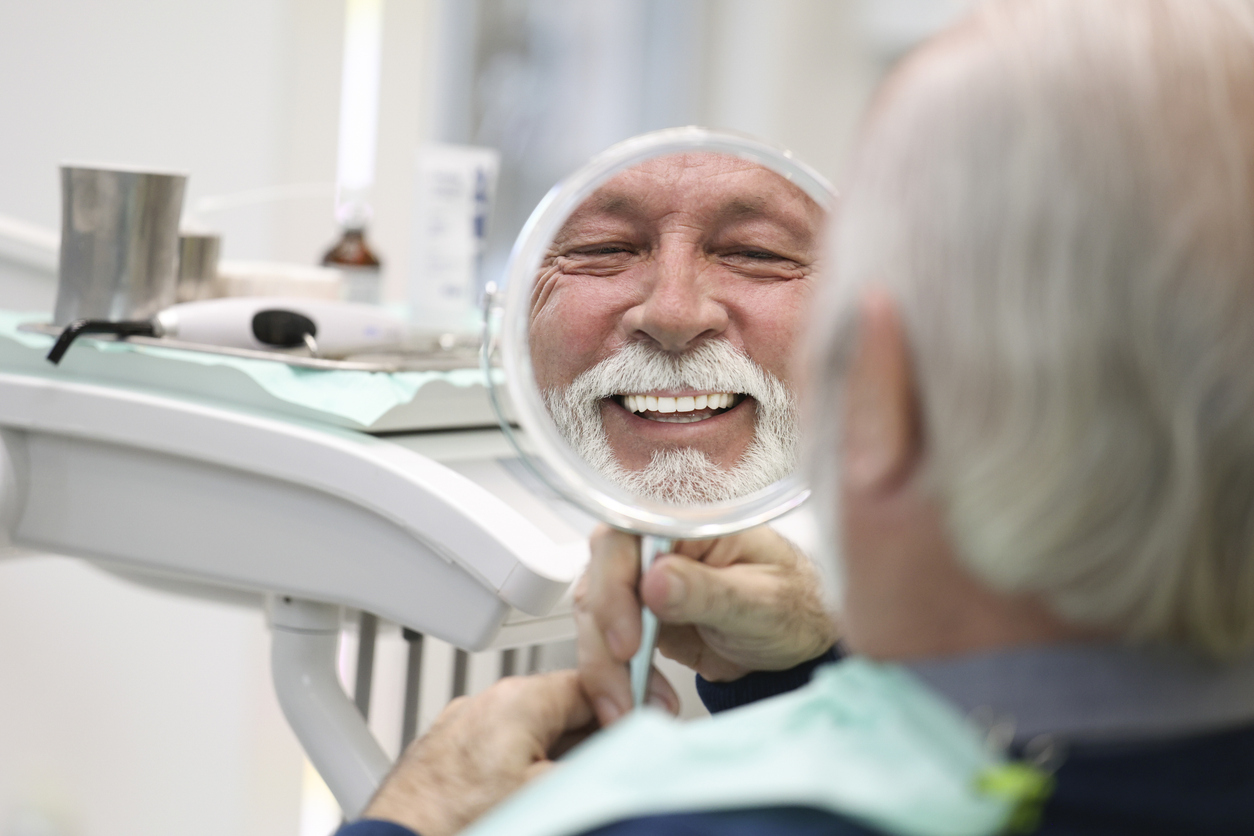Gum disease, also known as periodontal disease, is a common dental condition that affects millions of people worldwide. It can range from mild gingivitis to severe periodontitis, with symptoms like gum inflammation, bleeding, and even tooth loss.
When gum disease progresses to an advanced stage and threatens your oral health, one of the powerful tools in a periodontist’s arsenal is osseous surgery. In this blog post, we will explore what osseous surgery is and how periodontists use it to improve oral health for those battling gum disease.
Understanding Gum Disease
Before diving into osseous surgery, it’s essential to understand the dynamics of gum disease. Gum disease typically begins with the accumulation of dental plaque—a sticky film of bacteria—on the teeth. If not removed through regular brushing and flossing, this plaque can harden into tartar, leading to inflammation of the gums (gingivitis). If left untreated, gingivitis can progress to periodontitis, a more severe form of gum disease.
Periodontitis is characterized by the formation of pockets between the teeth and gums, which trap bacteria and can lead to further inflammation and the loss of supporting bone structure. At this stage, professional intervention becomes crucial.
What Is Osseous Surgery?
Osseous surgery, also known as flap surgery, is a surgical procedure performed by periodontists to treat advanced cases of gum disease. It’s a highly effective approach to halt the progression of periodontitis and restore the health of the supporting bone and soft tissues.
The procedure involves several key steps:
- Anesthesia: Local anesthesia is administered to numb the treatment area, ensuring a painless and comfortable experience for the patient.
- Incisions and Flap Creation: The periodontist makes small incisions in the gum tissue to create a flap, which can be lifted to access the roots of the teeth and the underlying bone.
- Cleaning and Smoothing: Once the flap is lifted, the dentist can thoroughly clean the tooth roots and the surfaces of the bone to remove plaque, tartar, and infected tissue. They also smooth any rough areas on the bone’s surface to discourage bacterial growth.
- Bone Reshaping: In cases where the supporting bone has been damaged or destroyed by periodontal disease, the periodontist may perform bone grafts or other procedures to regenerate lost bone tissue.
- Suturing: After cleaning, smoothing, and any necessary bone work, the flap is sutured back into place. Proper suturing is crucial to ensure proper healing and reattachment of the gum tissue to the teeth.
Recovery and Aftercare
Following osseous surgery, patients typically experience some discomfort and swelling, which can be managed with pain medication and proper post-operative care. Periodontists will provide specific instructions for oral hygiene and diet during the recovery period to ensure the best possible outcome.
Osseous surgery is a valuable tool in the fight against gum disease. Periodontists use this procedure to remove infection, restore damaged bone, and improve oral health for individuals with advanced periodontal disease. If you’re experiencing symptoms of gum disease or have concerns about your oral health, don’t hesitate to consult a periodontist, as early intervention is key to achieving the best results in treating gum disease and preserving your smile.
Nonsurgical Options
Osseous surgery is an effective method of stopping gum disease, but there are nonsurgical alternatives to osseous surgery for treating gum disease, especially in its early stages. These alternatives are typically recommended when the disease is less severe and may not require surgical intervention. Here are some nonsurgical options:
Scaling and Root Planing (Deep Cleaning)
This is one of the most common nonsurgical treatments for gum disease. It involves a thorough cleaning of the teeth and root surfaces to remove plaque and tartar buildup. The dentist or dental hygienist may use specialized instruments to scale (remove) the buildup from below the gum line and then smooth (plane) the root surfaces to prevent further plaque buildup. Scaling and root planing can help reduce pocket depth and inflammation.
Laser Therapy
Laser-assisted therapy is a minimally invasive alternative to traditional surgical procedures. Dental lasers can be used to remove infected tissue, reduce inflammation, and promote gum tissue reattachment. Laser therapy is often less painful and requires less recovery time compared to traditional surgery. It is highly recommended as an alternative to surgery.
Antibiotics
In some cases, antibiotics may be prescribed to control bacterial infection associated with gum disease. These antibiotics can be taken orally or applied topically in the form of gels, mouth rinses, or microspheres that are inserted into the gum pockets.
Prescription Mouthwashes
Dentists may prescribe antimicrobial mouthwashes or rinses containing chlorhexidine or other active ingredients to help control bacterial growth and reduce inflammation in the gums.
Prevention
Gum disease affects your mouth and your overall health. It can find its way into your social life causing self-esteem issues, and affect your nutritional intake by limiting your diet. The best thing you can do for yourself is to prevent gum disease from developing in the first place.
Fortunately, there are several effective ways to reduce your risk of developing gum disease or to manage it if you already have early-stage gum disease (gingivitis). Here are some key strategies for preventing gum disease.
1. Maintain Good Oral Hygiene:
- Brushing: Brush your teeth at least twice a day, preferably in the morning and before bedtime, using fluoride toothpaste. Make sure to brush for at least two minutes and use a soft-bristle toothbrush.
- Flossing: Floss daily to remove plaque and food particles from between your teeth and along the gumline. Proper flossing helps prevent the formation of plaque in hard-to-reach areas.
- Mouthwash: Consider using an antimicrobial or fluoride mouthwash as part of your daily oral care routine. Consult your dentist for recommendations.
2. Regular Dental Check-Ups:
Schedule regular dental check-ups and cleanings with your dentist or dental hygienist. These professionals can detect early signs of gum disease and provide professional cleanings to remove tartar buildup.
3. Healthy Diet:
Consume a balanced diet rich in fruits, vegetables, whole grains, lean proteins, and low-fat dairy products. Limit your intake of sugary and starchy foods, as they can contribute to plaque formation.
4. Avoid Tobacco Products:
Smoking and the use of other tobacco products increase the risk of gum disease. Quitting smoking and avoiding tobacco can significantly improve your oral health.
5. Limit Alcohol Consumption:
Excessive alcohol consumption can affect your oral health. If you choose to drink alcohol, do so in moderation.
6. Stay Hydrated:
Drinking plenty of water helps maintain saliva production, which plays a crucial role in rinsing away bacteria and food particles from your mouth.
7. Stress Management:
Chronic stress can weaken the immune system and contribute to gum disease. Practice stress-reduction techniques such as exercise, meditation, or yoga.
8. Use a Soft Toothbrush:
Avoid using a hard-bristle toothbrush, as it can damage your gums and tooth enamel. Opt for a soft-bristle toothbrush, which is gentler on your gums and teeth.
9. Replace Toothbrush Regularly:
Replace your toothbrush or toothbrush head every three to four months or sooner if the bristles become frayed.
10. Use a Tongue Scraper:
Cleaning your tongue with a tongue scraper can help remove bacteria and debris that can contribute to gum disease and bad breath.
11. Wear a Mouthguard:
If you grind your teeth at night or play contact sports, consider wearing a mouthguard to protect your teeth and gums from damage.
12. Know Your Risk Factors:
Some individuals are more prone to gum disease due to genetic factors, certain medical conditions, or medications. If you have risk factors, discuss a personalized prevention plan with your dentist.
Gum disease can progress silently, so maintaining a consistent oral care routine and attending regular dental check-ups are essential for early detection and prevention. If you notice any signs of gum disease, such as bleeding gums, persistent bad breath, or gum inflammation, seek dental care promptly to address the issue before it worsens.





